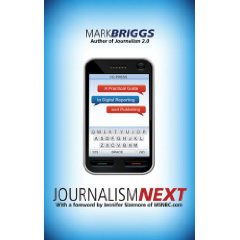A blog is an important tool for a young journalist. Many working journalists have blogs on top of their traditional stories, so it can’t hurt to start early. This chapter gives advice for starting and maintaining a good blog.
The three characteristics of a blog are:
- A frequently updated website that displays entries in reverse chronological order.
- Each entry, or post, has a headline and a body. Many contain links, pictures or video.
- Contains a place for readers to leave comments, although some blogs leave this part out.

Blogs make it possible for anyone to publish stories or information and share their thoughts and ideas on different subjects. They have helped journalism to become more immediate and interactive. Stories can be easily published as soon as possible without having to go through an editor. However, this increases the importance of self editing.
Before you start a blog, you should read a few to get familiar with the style. It is also important to get aquainted with the terminology:
- Post — entry on a blog.
- Permalink — a link on each post that directs readers back to the post, helpful for people emailing links to your blog.
- Trackback — lets bloggers know when others are linking to their material.
- Blogroll — a list of sites the blogger frequently visits that is located on the sidebar of the blog. Helpful for readers.
Making a blog is easy if you have a plan. Decide on a name, a description and what to write about. Blogger.com and WordPress.com are the two sites the book reccomends, although there are other options. After you have a name, it is time to pick a theme. Blogger and WordPress have their advantages when it comes to themes, so decide which is better for you.
Once you have a blog, you need to get readers. It is important to write quality attention-grabbing headlines, publish quality posts regularly and becomes active in the blogging community. Nothing bad can happen from commenting on other blogs and it might just get you a few new readers. You should also make an effort to update your blog daily.
There are a few things that can be done to make your blog more appealing to readers. It is good to have a specific topic so that your blog becomes a dependable source within the chosen topic. Posts should be scanable and include links and pictures. An RSS Feed is also a useful tool to include on the sidebar of your blog.
 No Comments »
No Comments »
 Posted by donaldomahony in Journalism Next assignments, tags: advice, Briggs, bytes, CSS, digital information, HTML, journalismnext, RSS feed, tutorials, web design, XML
Posted by donaldomahony in Journalism Next assignments, tags: advice, Briggs, bytes, CSS, digital information, HTML, journalismnext, RSS feed, tutorials, web design, XML
Chapter one explains basic terms and concepts that are needed to work in the digital world, such as:
- bytes, or units of measure for digital information. Abbreviations , such as K, M and G, are used in place of the full size names. Never send an email with an attachment over 1 MB or you risk clogging servers. It is important to be aware of file sizes because it could effect how quickly people can download your content.
- RSS stands for Really Simple Syndication. Instead of searching many websites or repeating your search multiple times daily, an RSS feed will do the work for you. It is the most efficient way to consume large amounts of information. Just set up a reader, find a feed you like and add it to your reader. There are seemingly endless categories for RSS feeds.
After some terms and concepts, the chapter moves on to web design basics. Although computer code can be intimidating, learning it is very useful for anyone looking to get ahead. As Guardian technology editor Charles Arthur wrote in his blog in January 2009, “If I had one piece of advice to a journalist starting out now, it would be: learn to code.”
Web pages are simply documents created in code that are stored on computers running as Web servers. When a browser find the right page, it makes a copy of the document and builds the web page on your computer by following the instructions in the code.

Journalism Next by Mark Briggs
The book explains the steps needed to create a simple HTML page. The code writer has complete control over the layout of the entire page.
The inclusion of photos or images is important to avoid boring the viewer. To call an image into a Web page, use code to tell the browser where it can find the image you wish to use. The browser will then visit the source of the image and make a copy to use with your Web page.
There is more than one type of code that can be used to build a Web page.
- HTML was created by computer scientists for computer scientists. It does a great job of transfering information, but is less capable of designing a nice looking page.
- CSS is better for making a page that is pleasing to the eye. For example, it can be used to make small changes to templtes on a WordPress blog theme. Helpful for this class already? I think so.
- XML is a complement to HTML. It is most commonly used in RSS feeds and uses tags to describe data. This type of code is most likely not needed unless you attempt to build your own RSS feed.
Mixing HTML and CSS is useful and will greatly improve the way your webpage looks. The book also gives links for tutorials in both HTML and CSS.
HTML Tutorials
CSS Tutorials
 1 Comment »
1 Comment »



 Entries (RSS)
Entries (RSS)